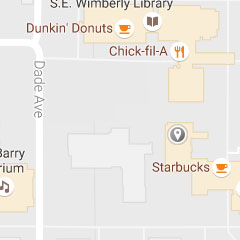Traffic Engineering
Overview
Traffic congestion is becoming one of the biggest problems when moving people and goods through urban road networks. While civil engineers are historically taught how to build new roads, there is no way to build society out of congestion problems without learning how to more efficiently utilize existing road infrastructure. Traffic flow theory and its major concepts are the building blocks of understanding how to deal with traffic congestion. Traffic simulation models are tools used to simulate various effects on traffic flows (e.g. control measures, new smart infrastructure and vehicles, etc.). Therefore, this competition will focus on traffic flow theory and traffic simulation games.
Objective
The objective of this competition is to show proficiency in understanding the major concepts of traffic flow theory and causes of traffic congestion on urban roadways.
Eligibility
Each university may have one team with up to four students, one of whom may be a graduate student. Each team will have a captain who is responsible for submitting the final results of the competition to the judges. All students must be members of the ASCE student chapter.
Description
The competition will consist of 5 simulation exercises where the students will be asked to model traffic flows (representing various traffic scenarios) according to the inputs given in the problem statements at the beginning of competition. The competition will take place in one of the FAU computer labs and will require basic use of computers although it will not be necessary to learn/use any specialized simulation software. The platform which will be used for the competition experiments will be given at the beginning of the competition. Each team will be given 15 minutes to become familiar with the simulation platform and 1 hour to finish all simulation exercises.
Requirements
The student teams are encouraged to equip themselves with knowledge in traffic flow theory and basic traffic engineering concepts. The competition is open-book, and students can use any hard-copy literature that they desire but no communications will be allowed with other people during competition. This includes electronic sources and web resources. Recommended textbooks are Traffic and Highway Engineering by Garber and Hoel, Traffic Engineering by Roess, Prassas and McShane and similar. These are not required materials – the simulation problems will not resemble any given problems from any textbook– these books are only suggested as appropriate references. It is expected that, in order to provide adequate answers to the simulation problems, participants will have to use a combination of calculation exercises (thus it is good to have some scratch paper and pencil, calculator, etc.) and observations of the computer screens with simulation platforms. The emphasis will be on the skillfulness, proficiency and efficiency of finishing all of the problems. All of the answers will be filled on the forms provided by the competition proctors.
Testing Procedure
Each student team will be given sixty (60) minutes to provide all of their answers. After one hour, the team’s responses will be collected and they will be given to the judges. If the answers are addressed before the end of the hour they will be collected when finished and the time of submission will be recorded for each paper.
Judging
The judging panel will consist of two judges. The judges will collect each school’s paper with the answers to the problems. The winner will be a student team whose paper has the highest number of points. In the case of two papers with the same number of points, the winner will be a team who submitted their paper first (spent less time to come up with the answers).
Disqualifications
Any communication with people outside of the competition team will result in disqualification.
Questions
Send questions to 2017asce@fau.edu. Answers will be posted on the Q&A page.


